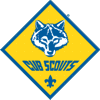Secret Codes and
Cryptology
Introduction
For as long as writing
has existed, there have been secret codes and cyphers. There has been a need to send messages that
are intended to be kept private or secret.
As long as there have been secret codes, there have also been people who
try to break these codes to learn those secrets
There are also codes
that are not secret, such as Morse Code that uses dots and dashes to represent
letters and numbers. This was the
primary method of sending messages across long distances quickly in the days
before telephones allowed us to use our voices.
Braille and Sign Language are also codes used to allow people who cannot
see and/or hear to communicate using touch or there hands.
Cub Scout Achievements
NOVA Award 1, 2, 3 Go!: Requirement 4
4- Secret
Codes
a-
Look up, then discuss with your counselor each of the
following:
1-
Cryptography
2-
At least three ways secret codes or ciphers are made
3-
How secret codes and ciphers relate to mathematics
b-
Design a secret code or cipher. Then do the following:
1-
Write a message in your code or cipher.
2-
Share your code or cipher with your counselor.
|
||
Wolf Elective Adventure: Code of the Wolf: Requirement 4
4- Do
one of the following:
a. Use a secret code using
numbers to send a message to one of your den members or your den leader. Have
that person send a message back to you. Be sure you both use the same code
numbers.
b. Send a message to another
member of your den or your den leader using the pig pen code or another code
that changes letters into special shapes.
c. Practice using a code stick
to create and decode a message.
|
||
Tiger Adventure Elective: Curiosity,
Intrigue, and Magical Mysteries: Requirements 4 and
5
4- Create
a secret code.
5- With
the other Scouts in your den or with your family, crack a code that you did
not create.
|
Discussion
Some examples you can use to demonstrate codes
with the boys include the following:
Morse Code- There is a great
application though Boys Life that teaches Morse Code. Though this is largely obsolete, hobbyist in Amateur
Radio still use it as means to communicate (they call it CW) and the military, pilots
and sailors also still learn it as a back-up communication if they lose voice communications.
Here
is the Link to the Boy’s Life Application for Morse code
Enigma and Ultra- The German Enigma
machine was used in World War 2 and due to the complexity of the machine, and
the fact the settings were changed every 24 hours, it had up to 159 million
million million (1,590,000,000,000,000,000) combinations!
To demonstrate this with the boys I obtained a
digital version of the machine that was developed by STGEOTRONICS (http://www.stgeotronics.com/Enigma-Replica_c3.htm
). Though this is expensive, it was a
fun project for me to build and it really gets the point across to the boys.
Less expensive (e.g. less than $10 or Free) alternatives
are a Windows application (https://www.microsoft.com/en-us/store/apps/enigma-machine/9wzdncrdgkzd
); web application (http://enigma.louisedade.co.uk/ );
and/or iPad application (https://itunes.apple.com/us/app/mininigma-enigma-machine-simulator/id334855344?mt=8
)
Discussion
For the boys, to meet the requirements listed
above, a simpler and doable code is needed.
For this I recommend the following items that are easy to prepare and
for them to figure out and have fun. These
are all easy to make and do.
1- Caesar
Wheel- This is also known as a shift cypher. The easiest one is where you have a inner and
outer wheel and the letters around the wheel are still in Order (e.g. A, B, C…). This is a good one to have them try to
break. For the requirement, they need to
make their own code so using the following wheels where the letters need to be
added to the inner wheel (make sure they do not duplicate letters, I recommend
having them check off the letters as they put them in).
Here is a template for your use
from an on-line teacher resource:
2-
Grid
Cypher- This is also known as a transposition cipher. It is simply a grid that correlated letters
with a letter number combination.
KEY
EXAMPLE
D O Y O U R B E S T
2E 1C 5E 1C D1 2B 2D 2A 1A 1E
3-
Code
Stick- To make a code on a code stick, you need a long strip of paper, and
a walking stick or a broomstick. First
you wind the strip of paper tightly around the broomstick. Then you write your message all the way down
the stick (you can write it on several lines).
When you unwind the message, no-one can read it unless they have the
same stick as you! But if they have the stick, they can read the message just
by winding the strip of paper around it again.
4-
Pig Pen-
Also known as the Masonic Cipher or Tic-Tac-Toe cipher. This uses grids and symbols to create the key
and those symbols to create the code that the key deciphers.
KEY
EXAMPLE
This should give you everything you need to teach the boys
secret codes and ciphers. Have fun!




















